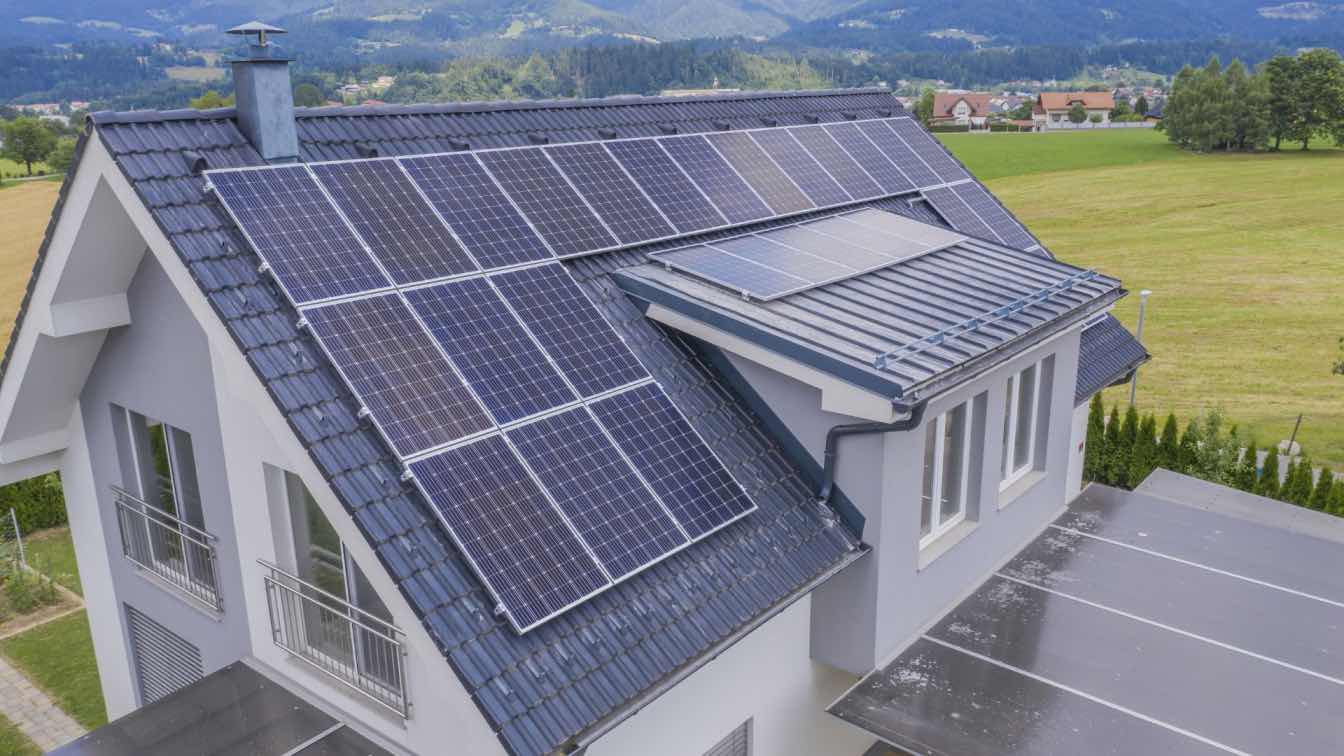As the demand for renewable energy sources continues to rise, structural engineers face unique solar panel problems when integrating solar installations into residential and commercial buildings. Ensuring the structural integrity of solar arrays is paramount to their long-term performance and the safety of the underlying structures. In this article, we explore 10 common problems with solar panels structural engineers encounter in rooftop installations and delve into the intricacies of addressing these challenges.
1. Load Distribution Issues
One of the primary concerns is the potential for uneven weight distribution across the roof. Structural engineers must meticulously analyze load distribution to prevent localized overloading. Solar panels and their support structures should be evenly distributed to avoid overloading specific areas.
The points where solar panels are attached to the roof are critical in load distribution. If the attachment points are not properly designed or distributed, they may create concentrated loads on specific areas of the roof.
Improper weight distribution can lead to uneven stress on the building structure, potentially causing structural damage or failure. Only an experienced solar structural engineer for rooftop installations should ensure that the load from solar panels is evenly distributed across the building's framework is crucial for maintaining stability.
Additional load distribution considerations
Consideration of Dead and Live Loads: Engineers must account for both dead loads (static weight of the solar panels and mounting structures) and live loads (dynamic forces such as wind and snow). Failure to consider these loads appropriately can result in an inaccurate assessment of the overall load distribution, leading to potential structural issues or safety hazards.
Impact on Roofing Material and Substructure: Rooftop solar installations should not compromise the existing roofing material or the underlying substructure. Load distribution must be carefully planned to prevent excessive stress on the roof structure, potentially causing leaks, material deterioration, or damage to the building envelope.
Structural Compatibility with Solar Racking Systems: The compatibility between the solar racking system and the building's structure is crucial for effective load distribution. Engineers must ensure that the racking system distributes loads evenly across the roof and aligns with the structural characteristics of the building. Compatibility issues may arise if the racking system is not properly integrated with the existing structure.
Impact on Roof Framing and Support Beams: Load distribution should consider the impact on the roof framing and support beams. Excessive loads concentrated on specific beams or framing elements can lead to bending or deflection beyond acceptable limits. Engineers must assess the load-bearing capacity of these structural elements to prevent compromising the overall integrity of the roof.
Roof Pitch and Orientation: The pitch and orientation of the roof affect the distribution of wind loads on the solar installation. Engineers must account for these factors to ensure that the combined effect of wind and dead loads is adequately distributed. Ignoring the roof's orientation can result in uneven loading, potentially leading to structural issues.
Impact on Roof Insulation: The weight of solar panels and related equipment can compress roof insulation over time, affecting its thermal performance. Load distribution must be designed to minimize the impact on insulation, ensuring its longevity and effectiveness in maintaining energy efficiency within the building.
2. Compatibility with Existing Structure:
The integration of solar installations with the existing structure requires careful consideration of the building's design, layout, and materials. Engineers must navigate potential conflicts to ensure a harmonious integration that doesn't compromise the structural integrity of the commercial building. Balancing the load-bearing capacity of the existing structure with the added weight of solar panels is a delicate task.
3. Wind and Seismic Considerations:
Solar installations are exposed to external forces such as wind and seismic activity. Engineers need to assess the impact of these forces on the solar array's structural design. Implementing measures to withstand varying environmental conditions is essential to prevent damage or failure during extreme weather events.
4. Roof Penetrations and Water Sealing:
Mounting solar panels often involves roof penetrations, creating potential vulnerabilities for water ingress. Structural engineers must implement effective waterproofing solutions to maintain the building envelope's integrity. Ensuring that penetrations are properly sealed prevents water damage and safeguards the structural components beneath.
5. Dynamic Loading Effects:
Solar panels experience dynamic loading effects, especially in windy conditions. Engineers must analyze the resonance, vibrations, and dynamic responses of the solar installation and the building structure. Addressing dynamic loading effects is crucial to preventing fatigue failure over time and maintaining the long-term stability of the solar array.
6. Thermal Expansion and Contraction:
Solar panels undergo significant temperature variations, leading to thermal expansion and contraction. Engineers must account for these movements in the structural design to prevent damage or loosening of mounting hardware. Ensuring the solar installation can withstand temperature fluctuations is vital for its durability and continued functionality.
7. Material Compatibility:
Different materials used in solar installations and building structures may have varying thermal coefficients of expansion and contraction. Structural engineers need to assess material compatibility to avoid long-term issues. Ensuring that materials work together harmoniously contributes to the structural integrity and longevity of the solar installation.
8. Structural Integrity of Attachment Points:
Attachment points, such as roof anchors or support structures, must be securely integrated into the building's structure. Engineers need to verify the adequacy of these attachment points to withstand loads and stresses over the operational life of the solar installation. Ensuring the structural integrity of attachment points is essential for the overall stability and safety of the solar array.
9. Foundation Design for Ground-Mounted Systems:
Ground-mounted solar installations require a robust foundation design to ensure stability and resistance against settling. Structural engineers must consider factors like soil-bearing capacity and settlement to design foundations that can withstand the load of the solar array. Adequate foundation design is critical for preventing subsidence and maintaining the long-term stability of ground-mounted systems.
10. Adequate Clearance and Access Requirements:
Solar installations need adequate clearance for maintenance and repairs. Structural engineers must design the structure to meet access requirements, ensuring safe and efficient servicing of the solar panels and associated equipment. Addressing clearance and access considerations contributes to the overall safety and ease of maintenance for the solar array.
Final thoughts…
Navigating these common challenges requires a comprehensive understanding of both structural engineering principles and the unique demands of solar installations. By addressing these issues proactively, structural engineers play a pivotal role in ensuring the reliability, longevity, and safety of solar energy systems integrated into commercial buildings.
Frequently Asked Questions
Can load distribution issues in rooftop solar installations lead to immediate structural failure?
While immediate structural failure is rare, uneven load distribution can cause long-term damage, compromising the roof's integrity over time. Structural engineers focus on designing systems that distribute loads evenly to prevent localized stress concentrations and ensure the safety and longevity of the structure.
How do engineers address concerns about the added weight of solar panels on the roof?
Engineers carefully calculate the dead loads imposed by solar panels and their support structures. They consider the building's load-bearing capacity and design solutions that evenly distribute the weight to avoid overloading specific areas. This approach ensures the roof can effectively support the added load without compromising structural integrity.
What is THE biggest problem for engineers with solar panel installation?
One of the significant challenges for engineers involved in solar panel installation is often associated with the structural integration of solar arrays onto existing buildings or structures. This challenge encompasses several key aspects:
Load Distribution and Structural Compatibility: Engineers must ensure that the added weight of solar panels, along with their mounting structures, is distributed evenly across the existing structure. This involves assessing the load-bearing capacity of roofs or other surfaces to prevent overloading specific areas. Ensuring compatibility with the building's structural design is crucial to maintaining overall integrity.
Addressing these structural integration challenges requires a comprehensive understanding of the existing building's architecture, materials, and load-bearing capacity. Engineers must design solutions that not only capture solar energy efficiently but also seamlessly integrate with the structural characteristics of the host building to ensure long-term stability and safety.
Are there specific considerations for the attachment points of solar panels to the roof?
Yes, attachment points are critical. Engineers ensure that attachment points are distributed evenly, avoiding concentrated loads. Properly designed attachment systems prevent damage to the roof and help maintain a balanced load distribution across the entire structure.
Can rooftop solar installations impact the existing roofing material and substructure?
Yes, improper load distribution can lead to issues such as leaks, material deterioration, or damage to the building envelope. Structural engineers assess the compatibility between the solar installation and the existing roofing material to minimize any adverse effects and maintain the roof's structural integrity.
How do engineers account for dynamic forces like wind and snow in load distribution calculations?
Engineers consider both dead loads (static weight) and live loads (dynamic forces) in their calculations. The impact of wind and snow on the solar installation is factored into the design to ensure that load distribution is appropriate for all environmental conditions. This comprehensive approach helps prevent structural issues caused by dynamic forces over time.





